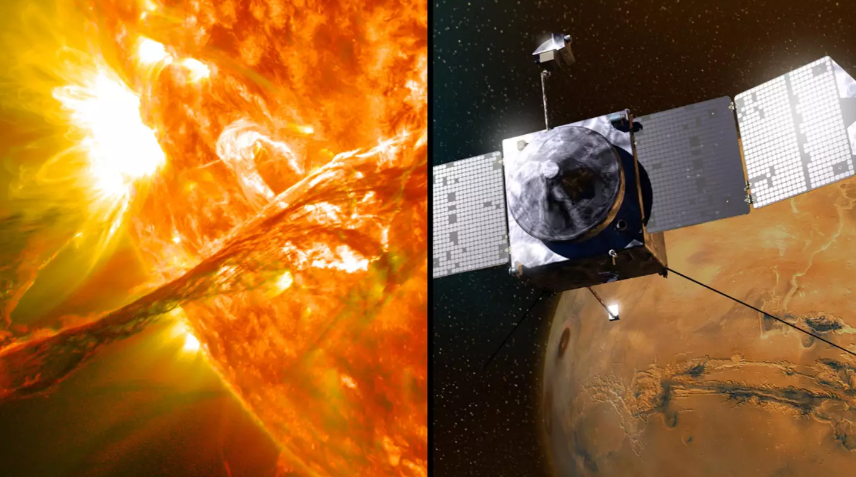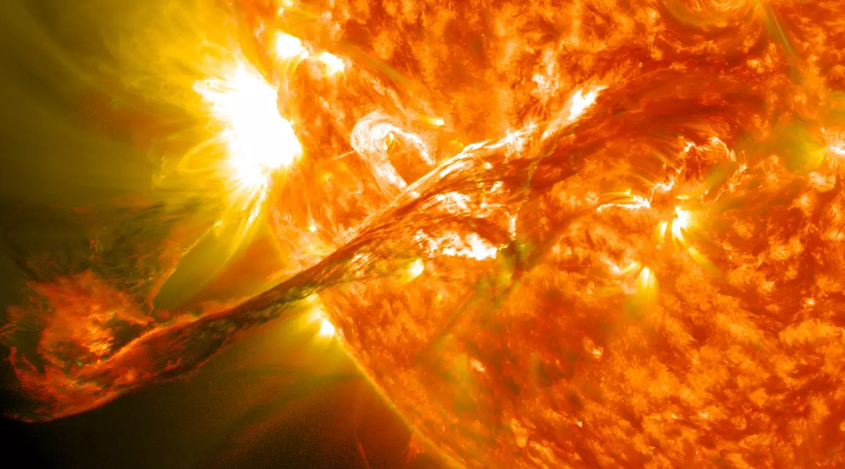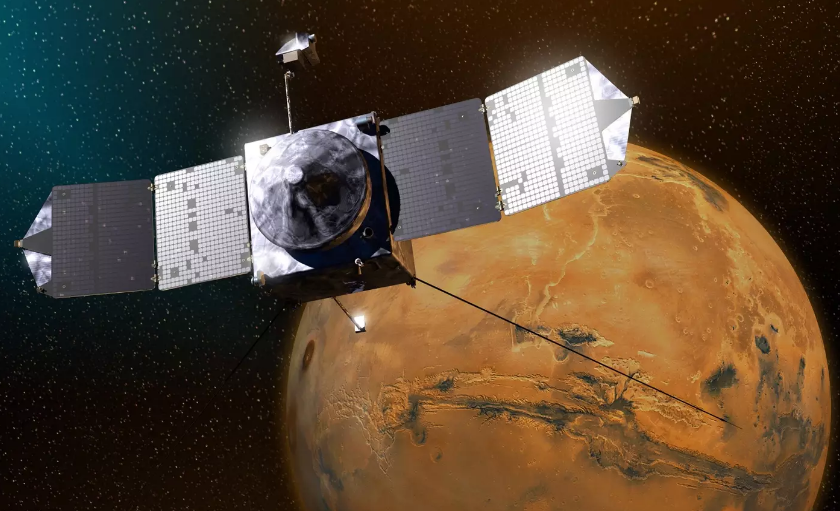Exploring the Sun's Explosions: Implications for NASA's Mars Mission
In the realm of space exploration, the Sun's fiery outbursts hold significant sway over our ventures beyond Earth. As NASA sets its sights on Mars, a colossal explosion on the Sun's surface is poised to shape the future of manned missions to the Red Planet.
The year 2024 marks a pivotal moment for our star, reaching the zenith of its activity. This rare spectacle presents scientists with a golden opportunity to unravel crucial insights that could influence the trajectory of NASA's Mars expeditions.
The urgency behind NASA's Mars initiatives is palpable, spurred by tantalizing hints of past alien life on the planet. However, a critical hurdle looms large—the Sun's periodic eruptions that occur roughly every 11 years.
Known as the solar maximum, this phase heralds the Sun's peak activity, unleashing potent solar storms and radiation bursts. While Earth basks in the protective embrace of its magnetic shield, Mars stands exposed, vulnerable to the Sun's unbridled fury.
The repercussions of these solar tempests extend far beyond celestial curiosity; they pose tangible risks to robotic missions and prospective astronauts on Mars. The extent of these risks remains shrouded in uncertainty, prompting NASA's meticulous scrutiny of the Sun's volatility in relation to Mars.
At the forefront of this inquiry are NASA's MAVEN (Mars Atmosphere and Volatile EvolutioN) and RAD (Radiation Assessment Detector) spacecraft. Positioned above the Martian surface, these vigilant probes delve into the impact of solar storms on Mars' magnetic field-deprived environs.
A pivotal facet of this investigation hinges on quantifying the radiation exposure that astronauts would endure during these solar upheavals. Contemplative strategies, such as seeking refuge in subterranean shelters, emerge as potential shields against the solar onslaught.
Shannon Curry, principal investigator for NASA's MAVEN orbiter, underscores the imperative of comprehending solar radiation's ramifications on Mars-bound missions. She articulates a collective eagerness within the scientific community to witness and decipher a monumental solar event at Mars, a crucible for refining our understanding of solar dynamics before embarking on human missions.
Don Hassler, principal investigator for RAD, accentuates the instrument's pivotal role in delineating the spectrum of solar radiation reaching Mars' surface, crucial insights for safeguarding future explorers.
Amidst unraveling the solar-martian dynamics, the expedition also delves into Mars' enigmatic past—a once-vibrant world, now an icy desert. The transformation from a watery haven to a frigid expanse remains a conundrum that has captivated astronomers for eons.
While water dwindles on Mars' surface, vestiges linger beneath the icy veneer and within the atmospheric vapors, painting a complex narrative of the planet's evolution.
In essence, NASA's odyssey to decode the Sun's explosions and their interplay with Mars encapsulates a quest for knowledge, resilience, and foresight—a testament to humanity's indomitable spirit in navigating the cosmic tapestry that beckons us beyond the stars.
%20(5).png)











